Otoplasty in Marrakech
Search and Compare the Best Clinics and Doctors at the Lowest Prices for Otoplasty in Marrakech

Find the best clinics for Otoplasty in Marrakech
With Medijump you can browse 1 facilities offering Otoplasty procedures in Marrakech. The cheapest price available is $853 in Marrakech. And for the cheapest price globally, prices start from $100 in Egypt.
Otoplasty in Morocco
Price: $ 853
Otoplasty in Marrakech
Price: $ 853
Egypt offers the best prices Worldwide
Price: $ 100
From 14 verified reviews
Osp Global, 03 December 2019
Excellent service with professionalism .Dr HASSAN EL GBOURI he did for me PRP and hair transplant it’s fantastic thank you Ms said I respect your work
Compare Before & After Photos of _procedure_photos.phpOtoplasty
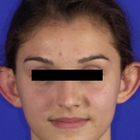
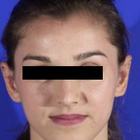
Front view
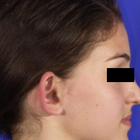
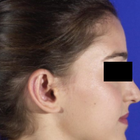
Full-side view
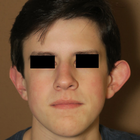

Front view

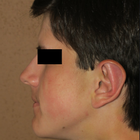
Full-side view
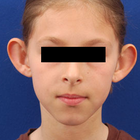
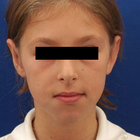
Front view
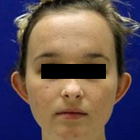
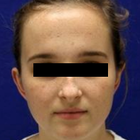
Front view
WHY US?
At Medijump, we're making medical easy. You can search, compare, discuss, and book your medical all in one place. We open the door to the best medical providers worldwide, saving you time and energy along the way, and it's all for FREE, no hidden fees, and no price markups guaranteed. So what are you waiting for?

Free

Best Price

Widest Selection

Risk-Free
What you need to know about Otoplasty in Marrakech

Otoplasty, also referred to as cosmetic ear surgery, is a type of cosmetic procedure to change the size, shape, or position of the ear. It is performed on the visible part of the outer ear, called auricle. Some people choose to have the surgery to correct odd-shaped ears due to an injury or birth defect. Others have it because they are concerned with how their ears protrude too far from their head. Otoplasty can be performed at any age after the ears have reached their full size, generally after age 5. In some cases, the surgery may be done as early as age 3.
There are several types of otoplasty. The following are the most common:
- Ear pinning draws the ears closer to the head. It is usually done on people whose ears stick out too far from their head.
- Ear augmentation is ideal for individuals whose ears are small or have not completely developed. This type of otoplasty can increase the size of the outer ear.
- Ear reduction is usually done on people with macrotia, which is a condition when the ears are larger than normal. Otoplasty can reduce the size of the ears.
What does a Otoplasty Procedure Involve?
Otoplasty is typically carried out under local anesthesia with a sedative, so you will be awake but you will not feel any pain. In some cases, general anesthesia may be used, typically for younger children.
The techniques used by your surgeon vary based on the type of otoplasty you are having. In general, your surgeon makes an incision either within the inner creases of your ears or on the backs of your ears. Then, your surgeon manipulates the tissue of the ear, which may include removal of cartilage or skin, grafting of cartilage to the ear, or folding and shaping of cartilage using permanent stitches. Once your surgeon is done correcting the shape, size, and position of your ears, the incisions are closed with stitches.
How Long Should I Stay in Marrakech for a Otoplasty Procedure?
Otoplasty can take between 1 and 3 hours to perform, depending on the complexity and the specifics of the procedure. It is typically done as an outpatient procedure, which means you can leave the hospital on the same day. It is recommended that you stay in Marrakech for 7 more days for follow-up checkups and removal of stitches.
What's the Recovery Time for Otoplasty Procedures in Marrakech?
The recovery period may vary from one person to another. You may experience numbness for several weeks, and mild bruising for about 2 weeks. For several months, your ears may feel stiff and sore.
You should be able to go back to work and resume your normal activities, including exercise, within one to two weeks after surgery. Physical contact sports, such as rugby, football, or judo, should be avoided for at least 3 months. You should also avoid swimming for up to 8 weeks following your otoplasty.
What sort of Aftercare is Required for Otoplasty Procedures in Marrakech?
Your surgeon will provide post-operative instructions. Make sure to follow the instructions carefully to promote smooth and quick recovery. You should rest with your head elevated on 2-3 pillows to minimize swelling. It is recommended that you eat a light, soft, and cool diet for several days. Take pain medication as prescribed by your doctor. Avoid sleeping on your side or rub the incisions to keep pressure off your ears. Consider wearing shirts with loose-fitting collars or button-down shirts.
What's the Success Rate of Otoplasty Procedures in Marrakech?
Otoplasty is a safe and effective procedure, with high satisfaction rates. More than 90% of people who had the procedure claimed to be extremely happy with the results. Note that it may take some time for the result to be fully visible.
While it is a safe procedure, you still need to be aware of possible risks and complications that otoplasty carries. These include bleeding, hematoma formation, infection of the skin, infection of the cartilage of the ear, permanent or temporary numbness around the affected area, scar or keloid formation, unfavorable results, prolonged pain, narrowing of the external ear canal, impaired healing, changes in skin sensation, asymmetry, and overcorrection.
Are there Alternatives to Otoplasty Procedures in Marrakech?
There are not many viable alternatives to otoplasty as of yet. One of the most popular alternatives is nonsurgical otoplasty, which does not require any incisions. The procedure uses special sutures to pin the ears back and achieve a more symmetrical look. These sutures are woven into the ears and will remain in place permanently. They are also virtually invisible, so the results will look natural.
For babies under three months old with prominent ears, ear-molds can be taped to their ears to reshape the ears without surgery. This type of treatment typically takes about six to eight weeks.
What Should You Expect Before and After the Procedure
Before otoplasty, you may have prominent or large ears or other deformity caused by an injury or birth defect that bothers you. Some people also feel self-conscious and embarrassed by the shape, size, and position of their ears. After the procedure, your ears will be corrected. Small or underdeveloped ears will be augmented to increase the size, the size of large ears will be reduced, and prominent ears will be drawn closer to the head. Your appearance will improve and you may feel more confident.
Whilst the information presented here has been accurately sourced and verified by a medical professional for its accuracy, it is still advised to consult with your doctor before pursuing a medical treatment at one of the listed medical providers
No Time?
Tell us what you're looking for and we'll reachout to the top clinics all at once
Enquire Now

Popular Procedures in Marrakech
Prices Start From $28

Prices Start From $1,945

Prices Start From $120

Prices Start From $275

Recommended Medical Centers in Marrakech for Otoplasty

- Interpreter services
- Translation service
- Religious facilities
- Medical records transfer
- Medical travel insurance
- Health insurance coordination
- TV in the room
- Safe in the room
- Phone in the room
- Private rooms for patients available

- Interpreter services
- Translation service
- Religious facilities
- Medical records transfer
- Medical travel insurance
- Health insurance coordination
- TV in the room
- Safe in the room
- Phone in the room
- Private rooms for patients available

- Interpreter services
- Translation service
- Religious facilities
- Medical records transfer
- Medical travel insurance
- Health insurance coordination
- TV in the room
- Safe in the room
- Phone in the room
- Private rooms for patients available
Otoplasty in and around Marrakech
About Marrakech
Located to the north of the foothills of the Atlas Mountains, Marrakech is the fourth largest city in the Kingdom of Morocco. Found nearly a thousand years ago, this city is where Africa, the Middle East, and Europe fuse into one. It is widely known as the red city because of its famous red walls, alleys, and plazas. The city offers a rare opportunity for tourists to immerse themselves in culture, where modern and ancient merge in a perfect balance. Just like many Moroccan cities, the medina in Marrakech is too beautiful to be missed.
Marrakech has the perfect environment for relaxing and rejuvenating, which is one of the reasons why many medical tourists seek health treatments in this beautiful red city. The medical facilities in the city offer outstanding quality with the latest technology and a wide range of treatments. Healthcare in this city is considerably cheaper than in Western countries and many people are also attracted to Marrakech because it is known to excel in modern plastic surgery. The most sought-after procedures are liposuction, nose jobs, breast lifts, and ear surgery. Other treatments such as dental care, spa, and wellness are also popular.
Popular Areas in Marrakech
This exotic city has everything for everyone, whether you want to indulge in its culture and history or have a luxurious and modern vacation.
- Djemaa El Fna is the most famous square in Morocco that attracts tourists from all around the globe. Often referred to as the heart of Marrakech, the square is a thrilling place to go shopping and get a closer look into the Moroccan culture. However, the real excitement starts when the sun sets and the square is transformed into an Arabian fantasy. It will be filled with fortune tellers, snake charmers, monkeys, and musicians, making it an interesting place to have fun and experience new things.
- Ali Ben Youssef Medersa is the largest madrasa in Morocco and one of the most important in North Africa. Built around 500 years ago, the Quranic learning center still retains its splendid beauty. It is said that up to 900 students have lived in the building to study law and theology. In 1960, it was turned into a museum and one of the most popular sights in Marrakech. Tourists can enjoy a striking view of architecture and decoration as its wall and columns have astonishing carvings, the large patio is made of marble, and the inner courtyard is decorated with mosaics.
- Musée Yves Saint Laurent is a must-visit for any fashion enthusiast and the museum exhibits selected masterpieces of haute couture clothing and accessories made by the legendary French fashion designer Yves Saint Laurent from 1962 until his retirement in 2002. Designed by Studio KO, the building itself is impressive with terracotta brick and earthen-colored terrazzo. The museum consists of a 150-seat auditorium, bookstore, a research library, and a terrace café.
- The Bahia Palace means brilliance in Arabic and it is a fascinating well-preserved historical site in Marrakech. It consists of a palace and a set of gardens which was built in the late 19th century. The building perfectly captures the essence of the Islamic and Moroccan style.
Weather and Climate in Marrakech
Marrakech mostly experiences a hot semi-arid climate. Spring starts in March and ends in May, with flowers blossoming and the temperature is between 15 °C at the lowest and 28 °C at the highest, spring is one of the best times to visit the city. If you’re planning to visit during this season, note that April and May have occasional rain showers. June to August are the summer months which can get extremely hot and the average temperature is around 26 °C to 30 °C, but it can increase to 36.8 °C. It is best to stay in the shade from noon to 3.00 PM when the sun is at its hottest.
The temperature will slowly decrease in the Autumn months of September to November. This season is also one of the best seasons to travel and have some outdoor adventures in the red city. Although the summer is remarkably hot, the winter in Marrakech is cold as the temperature sometimes plummets to 6 °C. This season runs from December to February and it is also the wettest season as rain is most predominant in December.
Getting Around in Marrakech
The main international airport serving Marrakech is the Marrakesh Menara International Airport. The airport operates domestic and international flights. It has two passenger terminals in one large building that serve flights to Europe, the Middle East, and Africa. Budget airlines such as EasyJet, Ryanair, and Wizz Air provides affordable options to travel to and from the red city.
Taxis are widely available throughout the city. It is also one of the most efficient and flexible ways to get to the main sites and there are two kinds of taxis in the city. The Grand taxis are old Mercedes cars that can carry up to six people and have a specific route with a fixed fare. Tourists can find the grand taxis at the bus station or Djemaa el Fna. Petit taxis are a private taxi, and the drive will take you anywhere. These taxis are metered and can be a little more expensive than the grand taxis. There are drivers who do not use the meter so you should bargain or ask the driver to switch the meter on before you get into one.
Buses are the most inexpensive way to get around. Tourists can find them in the central bus station of Place El Mouarabitene, and most buses will stop at the Djmaa el Fna. Tourists can pay the fare directly to the driver. If you want a more traditional and interesting way to get around, you can opt for the caliche and it is a horse-drawn carriage with a fixed price for the most common routes.
Tourist Visas in Marrakech
There are around 66 countries granted visa-free access to Morocco for up to 90 days, including the European Union, Australia, China, Russia, and the United States. Citizens of the Republic of the Congo, Guinea, and Mali do not require a visa but must obtain an Electronic Travel Authorization in advance. It is best to always check the current regulations at the nearest Moroccan Embassy or Consulate before applying for a visa.
Additional Information
- Local Currency: The official currency is the Moroccan Dirham (MAD) and the exchange rate from 1USD is 9.70 MAD.
- Money & Payments: ATMs can be found all over the city. Credit cards are mostly accepted in top-end restaurants and hotels. Tipping can be obligatory sometimes.
- Local Language: Modern Standard Arabic and Berber is the official languages and French is widely spoken. English is not common but there will be people who can speak English especially in tourist areas.
- Local Culture and Religion: The majority of the population follows Islam. There are also people who follow Christianity, Judaism, and Baha’i Faith.
- Public Holidays: Islam religious holidays such as Islamic New Year and Eid al-Fitr are celebrated in Marrakech.
Popular Searches
- Plastic Surgery in Thailand
- Dental Implants in Thailand
- Hair Transplant in Thailand
- Breast Augmentation Thailand
- Gastric Sleeve in Thailand
- Gender Reassignment Surgery in Thailand
- Laser Hair Removal in Bangkok
- Botox in Bangkok
- Dermatology in Bangkok
- Breast Augmentation in Bangkok
- Coolsculpting in Bangkok
- Veneers in Turkey
- Hair Transplant in Turkey
- Rhinoplasty in Turkey
- Stem Cell Therapy in Mexico
- Rhinoplasty in Mexico
- Liposuction in Mexico
- Coolsculpting in Tijuana
- Rhinoplasty in Korea
- Scar Removal in Korea
- Gastric Sleeve in Turkey
- Bone Marrow Transplant in India
- Invisalign in Malaysia
- Plastic Surgery in the Dominican Republic
- Tummy Tuck in the Dominican Republic
- Plastic and Cosmetic Surgery in Poland
- Rhinoplasty in Poland
- Hair Implant in Poland
- Dental Implants in Poland
- IVF in Turkey
